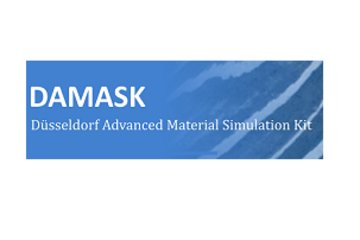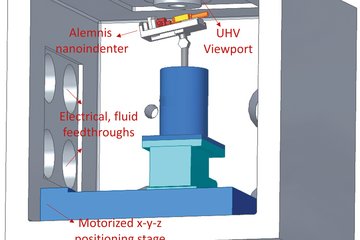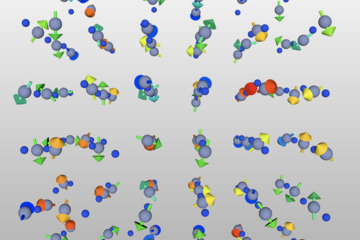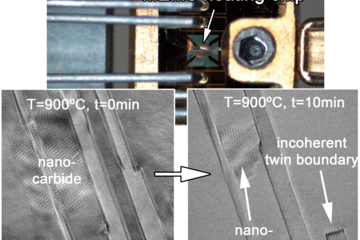All genres
21.
Journal Article
Deformation mechanisms, activated slip systems and critical resolved shear stresses in an Mg-LPSO alloy studied by micro-pillar compression. Materials and Design 154, pp. 203 - 216 (2018)
22.
Journal Article
Manipulation of matter by electric and magnetic fields: Toward novel synthesis and processing routes of inorganic materials. Materials Today 21 (5), pp. 527 - 536 (2018)
23.
Journal Article
A rare-earth free magnesium alloy with improved intrinsic ductility. Scientific Reports 7, 10458 (2017)
24.
Journal Article
Dislocation interaction and twinning-induced plasticity in face-centered cubic Fe–Mn–C micro-pillars. Acta Materialia 132, pp. 162 - 173 (2017)
25.
Journal Article
Room temperature deformation of LPSO structures by non-basal slip. Materials Science and Engineering A: Structural Materials Properties Microstructure and Processing 682, pp. 354 - 358 (2017)
26.
Journal Article
Intrinsic and extrinsic size effects in the deformation of amorphous CuZr/nanocrystalline Cu nanolaminates. Acta Materialia 80, pp. 94 - 106 (2014)
27.
Talk
Combining Experiments, Simulations, and Data Science to Understand Damage in Dual Phase Steels. International Conference on Plasticity, Damage, and Fracture, Riviera May, Mexico (2020)
28.
Talk
Dislocation interaction and twinning-induced plasticity in face-centered cubic Fe–Mn–C micro-pillars. MRS Fall Meeting , Boston, MA, USA (2017)
29.
Talk
Dislocation interaction and twinning-induced plasticity in face-centered cubic Fe–Mn–C micro-pillars. MECANO General Meeting, Toulouse, France (2017)
30.
Talk
Size and orientation effects on the elasto-plastic transition and deformation mechanism of twinning-induced plasticity steel micro-pillars. MSE 2016 Conference , Darmstadt, Germany (2016)
31.
Poster
The effect of size-independent strength on the size effect in micro-compression tests. MRS Fall Meeting, Boston, MA, USA (2017)
32.
Thesis - PhD
Microstructural Relationships of Strength and Ductility in a Newly Developed Mg–Al–Zn Alloy for Potential Automotive Applications. Dissertation, RWTH Aachen University (2020)
33.
Thesis - PhD
Microstructural Relationships of Strength and Ductility in a Newly Developed Mg–Al–Zn Alloy for Po-tential Automotive Applications. Dissertation, RWTH Aachen University (2020)
34.
Thesis - PhD
Challenges and opportunities associated to the characterization of H/D in Ti and its alloys with atom probe tomography. Dissertation, RWTH Aachen University (2019)
35.
Thesis - PhD
Deformation mechanisms and the role of interfaces in face-centered cubic Fe-Mn-C micro-pillars. Dissertation, RWTH Aachen, Aachen, Germany (2018)
36.
Thesis - PhD
An investigation of hydrogen/microstructure interaction in complex nickel-based alloys: Multi-scale detection and embrittlement mechanisms. Dissertation, RWTH Aachen, Aachen, Germany (2017)
37.
Thesis - PhD
Investigation of deformation mechanisms in magnesium crystals. Dissertation, RWTH Aachen, Aachen, Germany (2017)
38.
Thesis - PhD
On the design of alloys and synthesis for composite steels. Dissertation, RWTH Aachen, Aachen, Germany (2017)
39.
Thesis - PhD
Fundamentals of ferrous low-carbon lath martensite: from the as-quenched, to tempered and deformed states. Dissertation, RWTH Aachen, Aachen, Germany (2017)
40.
Thesis - Master
Characterization of the microstructure and impurities of Al–Mg–Sc alloy produced by Laser Additive Manufacturing. Master, RWTH Aachen, Aachen, Germany (2016)











